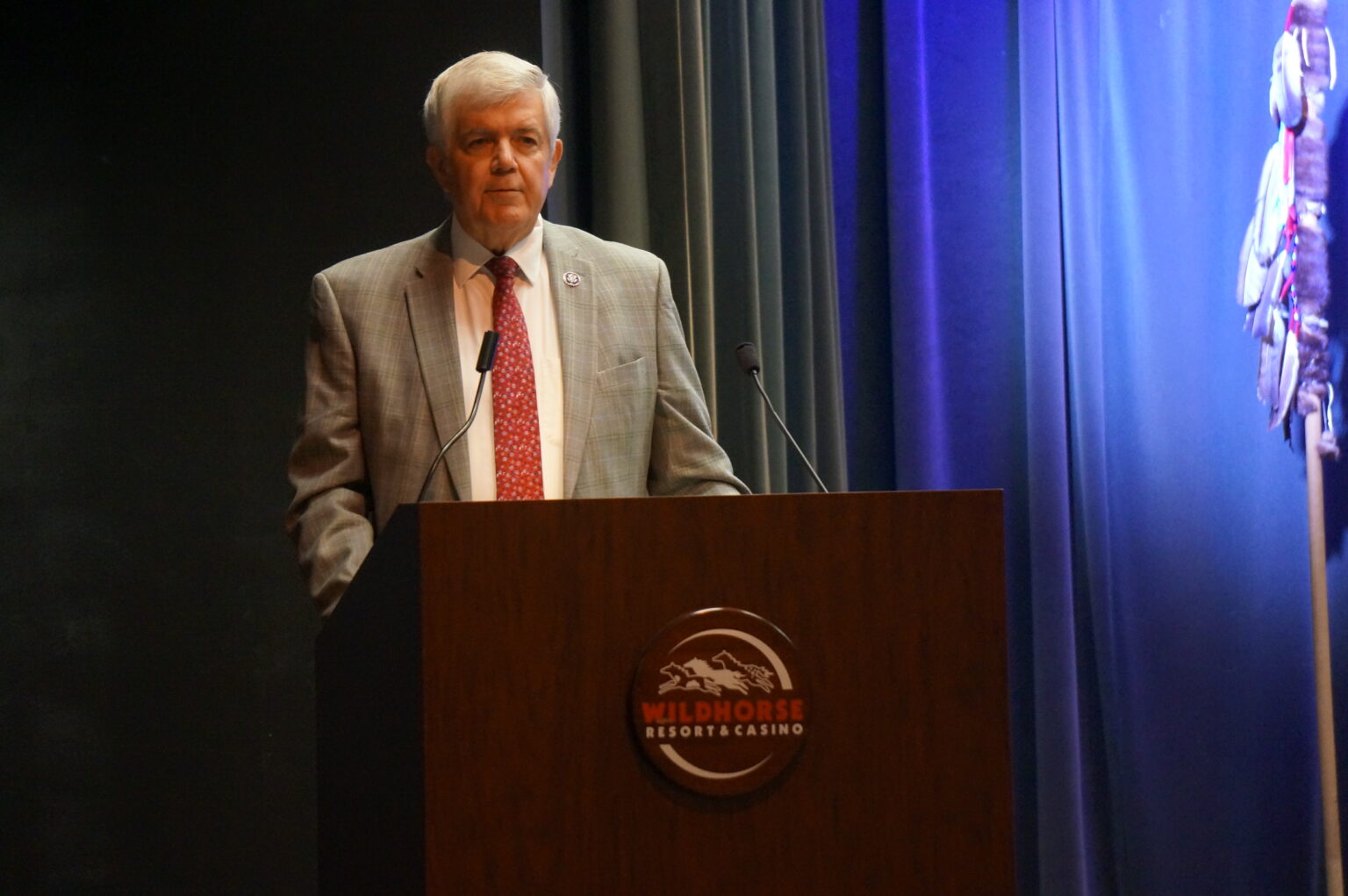Out and About: Sampling the tamarack show in the Elkhorns
Published 3:08 pm Monday, October 21, 2024

- Jacoby
Went for a hike in the woods on a recent Sunday to check on the tamaracks’ annual autumnal show.
Trending
But the cottonwoods, as it turned out, made a bid for top billing, the floral equivalent of a haughty actor who would shove the star into the orchestra pit if necessary to avoid sharing the spotlight.
My wife, Lisa, and I appreciated this annual competition between a typical deciduous tree, the cottonwood, and its unconventional conifer cousin.
The tamarack bears cones just like the pines and firs and spruces with which it shares the slopes of the Blue Mountains.
Trending
But unlike those evergreen species, the tamarack, known more formally as the western larch, sheds its needles each fall.
Before they drift to the ground, though, those needles turn from their customary summer shade of pale green first to yellow and then to orange. With their proliferation of needles — they grow in bundles of 15 to 20 at the tip of each twig, far more than any pine or fir can boast — tamaracks inflame the forest with slashes of color visible from a dozen or more miles.
This extravagant display, alas, is brief.
Most years the tamaracks reach their brilliant apex between around Halloween and Thanksgiving.
Lisa and I hiked an old road beside Anthony Creek, in the northern Elkhorn Mountains northwest of Baker City, on Oct. 20, a trifle early for peak color.
The tamaracks, though still in the transition from yellow to orange, were quite bright enough to stand conspicuous amid the other conifers.
Anthony Creek, which as its name suggests flows from Anthony Lake, just east of the renowned ski area, is a substantial stream with a broad floodplain.
There is room for not only the willows, alders and red-osier dogwood that shade lesser creeks, but also an occasional thick-trunked cottonwood.
Aspen groves grace more coffee table books and calendars, I suppose. I understand the allure — a patch of aspen in October, with their glistening white bark and dancing yellow leaves, is a classic scene.
But cottonwoods, to my eye, can compete with aspens for stirring scenes.
Fire and ice (and sand)
Lisa and I hiked to Sand Flats, a meadow that covers a few acres along Anthony Creek.
Three natural forces, two of them prehistoric, one relatively recent, are largely responsible for sculpting this part of the Wallowa-Whitman National Forest.
The raw materials were fire and ice.
The oldest, dating to about 140 million years ago, consisted of masses of molten rock.
But unlike the magma that spews out of the Earth like blood from a wound and forms volcanoes or lava flows, this rock solidified far beneath the surface. It hardened into various types of granitic rock (most of which, according to geologists, aren’t true granite) that was later exposed by unfathomable geologic forces over a multitude of millennia.
Then came the ice.
In two separate periods, separated by tens of thousands of years, a glacier that formed high in the Elkhorns flowed first north and then east, proceeding at the imperceptible pace that a river of ice can muster.
The glacier gouged the distinctive U-shaped valley that distinguishes glacial canyons from those excised solely by water (glaciers, being much thicker than rivers are deep, extend farther up the canyon walls).
Emily Geraghty, a geology student at Whitman College in Walla Walla, Washington, studied the glacial history of the Elkhorns in the late 1990s. She concluded a glacier extended along the Anthony Creek Canyon during two glacial periods, one between around 150,000 years and 200,000 years ago, the other between roughly 10,000 and 30,000 years ago.
Geraghty estimated that the glacier extended for about eight miles during the more recent glacial period, and for about 7.5 miles during the older stanza.
The scale, and shape, of the glaciers’ handiwork is much more obvious from an elevated vantage point. The High Mountain Road, for instance, several hundred feet above Sand Flats to the north.
But the effect of the other natural sculptor — fire — needs no wider perspective.
On July 19, 1960, a dry lightning storm illuminated the Elkhorns. Its bolts ignited at least 80 fires, a few of which combined their combustion to create the Anthony Fire. The blaze, though its 20,000-acre toll seems rather quaint put up against today’s blazes that sometimes scorch 10 times the expanse or more, still lies heavy on the landscape.
The blackened trees have long since given way to an occasional bone-gray skeleton.
But the borders of the blaze remain conspicuous, distinguished by a nearly unbroken stand of lodgepole pines of remarkably consistent height.
Lodgepoles love fire.
Depend on it, even, as many lodgepole cones are serotinous, meaning they won’t release their seeds until heated by flames.
Tamaracks also recolonize burned ground with alacrity, especially when, as with the Anthony Fire, some of the mature trees survive to provide the seed source.
Water
Another highlight of the hike is the stream.
Anthony Creek has always seemed to me an unusually engaging mountain stream, alternating between deep pools and placid reaches and fetching, melodic torrents where the water is squeezed between granitic boulders.
The light color of the native rock makes the water seem unusually crystalline, the minerals glistening in the October sunshine.
Our hike was between the buck and elk seasons. We saw neither person nor vehicle.
Sand Flats is a popular spot for hunters’ camps, though, so it’s apt to be occupied for the next few weekends at least. We saw ample sign of elk, although none of the animals. I hoped for elk when I heard the thud of hooves in the deep woods but it was only a mule deer.
Lisa saw a pileated woodpecker but I was looking the wrong way and missed altogether its brilliant red plumage.
Soon the scene will shift, the yellow cottonwoods and orange tamaracks giving way to the dominant color in the mountains, the white snow.
But even in the depths of a winter cold snap the stream will trundle along, muttering to itself in its inimitable language.
To get to Sand Flats, drive the Anthony Lakes Highway toward the ski area. About 2.3 miles beyond the Wallowa-Whitman National Forest boundary sign, and just past a sweeping left turn, turn right onto Road 7312, which is marked by a sign reading “Anthony Creek 7.” Drive about 3.5 miles to the bridge over Anthony Creek. The road to Sand Flats, 7312-065, starts on the left just beyond the bridge. It’s about 1.5 miles to the meadow. A path continues up the canyon for another mile or so.









